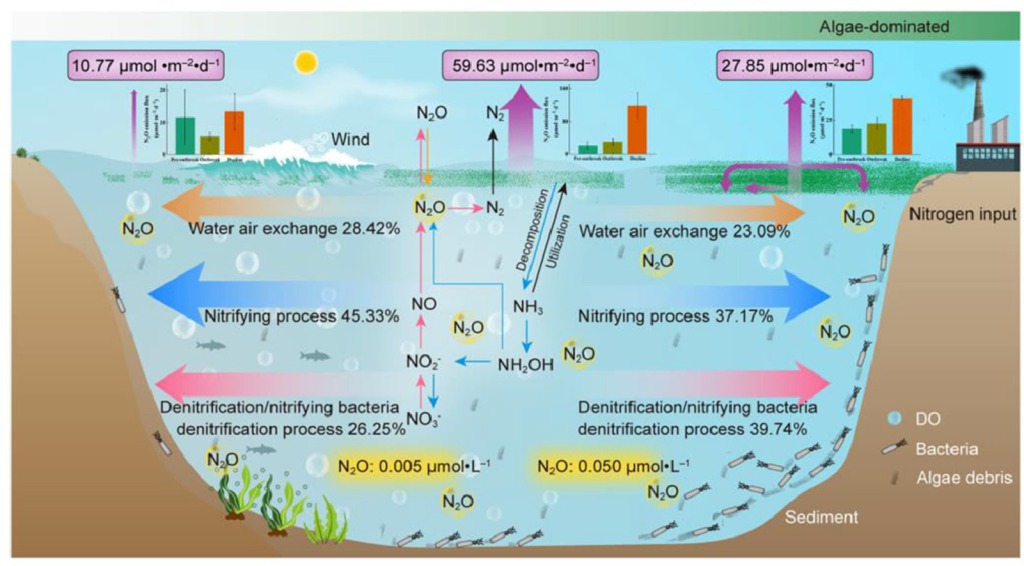
Authors
Yiping Wang, Yu Peng, Chengxu Lv, Xiaoguang Xu, Han Meng, Yiwen Zhou, Guoxiang Wang, Yongjun Lu
It is generally accepted that eutrophic lakes significantly contribute to nitrous oxide (N2O) emissions. However, how these emissions are affected by the formation, disappearance, and mechanisms of algal blooms in these lakes has not been systematically investigated. This study examined and determined the relative contribution of spatiotemporal N2O production pathways in hypereutrophic Lake Taihu. Synchronously, the multi-impacts of algae on N2O production and release potential were measured in the field and in microcosms using isotope ratios of oxygen (δ18O) and bulk nitrogen (δ15N) to N2O and to intramolecular 15N site preference (SP). Results showed that N2O production in Lake Taihu was derived from microbial effects (nitrification and incomplete denitrification) and water air exchanges. N2O production was also affected by the N2O reduction process. The mean dissolved N2O concentrations in the water column during the pre-outbreak, outbreak, and decay stages of algae accumulation were almost the same (0.05 μmol·L–1), which was 2–10 times higher than in lake areas algae was not accumulating. However, except for the central lake area, all surveyed areas (with and without accumulated algae) displayed strong release potential and acted as the emission source because of dissolved N2O supersaturation in the water column. The mean N2O release fluxes during the pre-outbreak, outbreak, and decay stages of algae accumulation areas were 17.95, 26.36, and 79.32 μmol·m–2·d–1, respectively, which were 2.0–7.5 times higher than the values in the non-algae accumulation areas. In addition, the decay and decomposition of algae released large amounts of nutrients and changed the physiochemical properties of the water column. Additionally, the increased algae biomass promoted N2O release and improved the proportion of N2O produced via denitrification process to being 9.8–20.4% microbial-derived N2O. This proportion became higher when the N2O consumption during denitrification was considered as evidenced by isotopic data. However, when the algae biomass was excessive in hypereutrophic state, the algae decomposition also consumed a large amount of oxygen, thus limiting the N2O production due to complete denitrification as well as due to the limited substrate supply of nitrate by nitrification in hypoxic or anoxic conditions. Further, the excessive algae accumulation on the water surface reduced N2O release fluxes via hindering the migration of the dissolved N2O into the atmosphere. These findings provide a new perspective and understanding for accurately evaluating N2O release fluxes driven by algae processes in eutrophic lakes.
